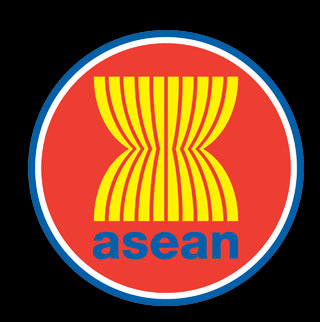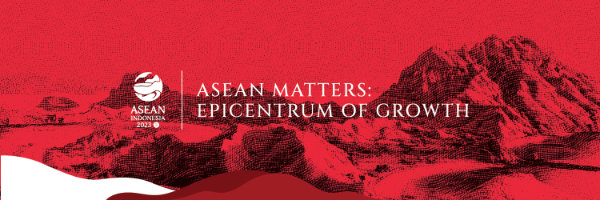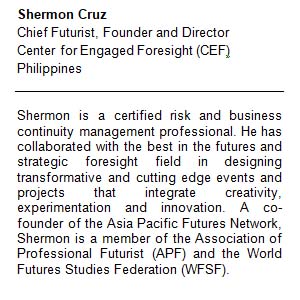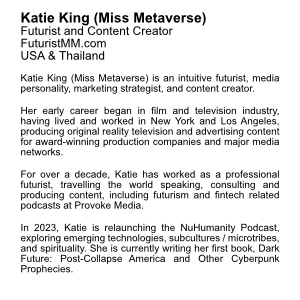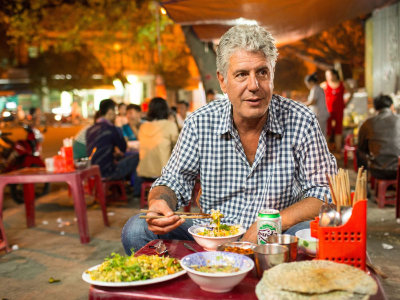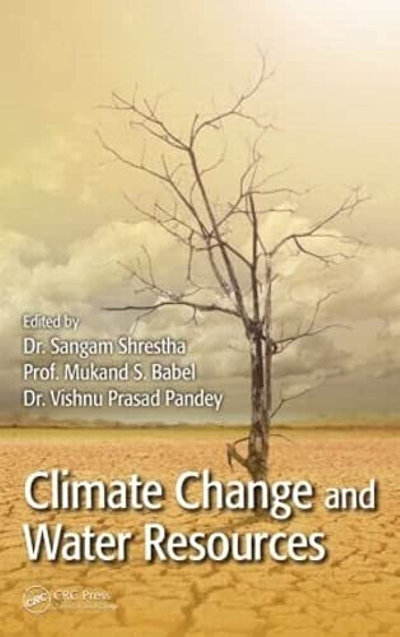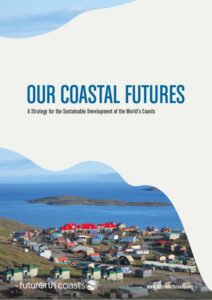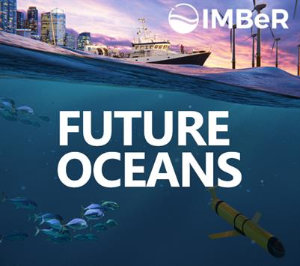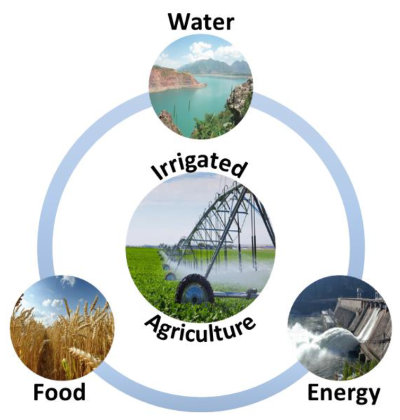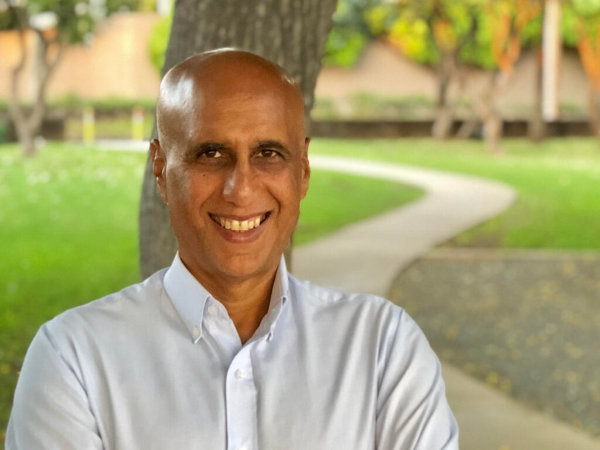Home
Journals Archive
Journals – Main Topics
Climate Change Success Stories
The Future Now Shows
CONTENT
Chairing ASEAN: what does it mean for Indonesia in 2023?
by Muhammad Rifqi Daneswara, Indonesian Institute of Advanced International Studies (INADIS)Demographics: Optimism for Southeast Asia
by Peter ZeihanASEAN - the Future?
with Shermon Cruz, James M. Dorsey, Mike Jackson & Miss MetaverseChina ASEAN Relationship
by CGTN TV Asia TodayPhilippines, Thailand and Singapore
with Anthony BourdainClimate Change and Water Resources
by Sangam Shrestha, Mukand S. Babel, Vishnu Prasad PandeyThe science of water sustainability
by TechKnow, Al Jazeera English
Sohail Inayatullah
UNESCO Chair of Futures Studies
Tags:
ASEAN, Auroville, Climate Change, Coasts, Culture,
Digital Economy, ECONOMY, FOOD, Marine Biosphere,
Oceans, Philippines, SDGs, Singapore, Smart Roads,
Sustainability, Thailand, Ultra-high-speed transportation,
Water, Water Resources
Club of Amsterdam Search
Submit your article
Contact
Subscribe
Welcome
Felix B Bopp
Website statistics for
clubofamsterdam.com
April 2023:
this year visits:
last year
ASEAN
The Association of Southeast Asian Nations, or ASEAN, was established on 8 August 1967 in Bangkok, Thailand, with the signing of the ASEAN Declaration (Bangkok Declaration) by the Founding Fathers of ASEAN: Indonesia, Malaysia, Philippines, Singapore and Thailand. Brunei Darussalam joined ASEAN on 7 January 1984, followed by Viet Nam on 28 July 1995, Lao PDR and Myanmar on 23 July 1997, and Cambodia on 30 April 1999, making up what is today the ten Member States of ASEAN.
Fundamental Principles
In their relations with one another, the ASEAN Member States have adopted the following fundamental principles, as contained in the Treaty of Amity and Cooperation in Southeast Asia (TAC) of 1976:
- Mutual respect for the independence, sovereignty, equality, territorial integrity, and national identity of all nations;
- The right of every State to lead its national existence free from external interference, subversion or coercion;
- Non-interference in the internal affairs of one another;
- Settlement of differences or disputes by peaceful manner;
- Renunciation of the threat or use of force; and
- Effective cooperation among themselves.
Quotes
Sohail Inayatullah: "While focusing on what works is important, I would like to begin with a discussion on what has not worked, with the intent to learn from failures. What does not work often has more “energy” – it certainly affords a greater opportunity to learn."
Anthony Bourdain: "I always entertain the notion that I'm wrong, or that I'll have to revise my opinion. Most of the time that feels good; sometimes it really hurts and is embarrassing."
Auroville: "Today Auroville has come a long way in terms of water management. Beyond the largely successful reforestation of the area, major work in erosion control via check dams, rainwater harvesting via bunds and de-silting irrigation tanks, waste water treatment plants within individual communities, appropriate building technologies, emphasis on renewable energies, community awareness, and data gathering have all been areas of strength.
Despite the strides we have taken, there is still a long way to go given the challenges that face us today."
Lead Article:
Chairing ASEAN: what does it mean for Indonesia in 2023?
by Muhammad Rifqi Daneswara, Indonesian Institute of Advanced International Studies (INADIS)
Muhammad Rifqi Daneswara
Despite many obstacles and challenges, including the Russia-Ukraine war and global recession, host nation Indonesia managed to ensure that the high-level conference held in Bali on November 15-16 2022 produced a joint declaration, known as the G20 Bali Leaders’ Declaration. It shows how Indonesia, under President Joko “Jokowi” Widodo, has tried to be a unifying force in the midst of global uncertainty.
Now Indonesia has shifted focus and attention to its next significant challenge: chairing ASEAN (the Association of Southeast Asian Nations) in 2023.
This is the fifth time Indonesia has held the ASEAN Chairmanship – previously it was in 1976, 1996, 2003 and 2011. The handover of the ASEAN chairmanship from Cambodia to Indonesia was carried out at the ASEAN Summit last November.
Amid the current global geopolitical uncertainty, there are at least three major challenges Indonesia will face during its chairmanship of the largest regional forum of the Southeast Asian countries. These include bringing ASEAN nations together on global issues; strengthening regional cooperation; and pushing for more, not less, multilateralism.
1. Keeping ASEAN united on global issues
As chair, Indonesia is responsible for leading various ASEAN efforts in solving regional and global crises.
ASEAN countries are currently fractured on big issues, like the South China Sea and Myanmar. Each ASEAN member state has different position, perspectives and interests on the matter.
This condition has made ASEAN member states vulnerable to be divided and exploited by major powers.
China and the United States are currently competing for influence as part of the global rivalry between the great powers. South East Asia is strategically located in the middle of Indo-Pacific, a region winning increased attention from both policy makers and experts in recent years.
Not only does Indonesia need to take into account the interest of ASEAN member states, it also needs to balance competing interests from abroad.
2. Strengthening regional cooperation
Even though Indonesia is the largest country in ASEAN, and has introduced regional breakthroughs in the past, Indonesia cannot push through challenges alone. Indonesia needs to build consensus among members that have different national interest and goals.
Thus, Indonesia needs to embrace ASEAN member states to strengthen regional cooperation where there are less contention and more convergence of interest.
Issues such as food security and resilience, maritime security and transnational crimes can be places to start seeing ASEAN’s importance to member countries. These so-called “low-hanging fruit” issues are plentiful, and Indonesia can spearhead effort at regional level to push for further ASEAN cooperation on them.
The impacts of the COVID-19 pandemic and the Russia-Ukraine war on the global supply chain and economy should show ASEAN countries they need a stronger cooperation at a regional level, and the value of working within ASEAN’s framework rather than pursuing policies unilaterally.
One successful example of this is on pandemic preparation, with the setting up of ASEAN Centre for Public Health Emergencies and Emerging Diseases at the 15th ASEAN Health Minister Meeting in Bali.
ASEAN has established this centre so its members can be better prepared for the next pandemic.
3. Pushing for a return to multilateralism
Indonesia needs to push for “multilateralism”, which is currently under threat by the proliferation of “minilateralism”. Failure to do so will push ASEAN to the periphery and at the mercy of great powers.
Multilateralism can be defined as international cooperation between three states or more. “Minilateralism” does not have a specific definition, but for this article, I am using the definition as:
the smallest possible number of countries needed to have the largest possible impact on solving a particular problem with the number of countries varied depending on the problem.
In recent years, minilateralism has facilitated the emergence of institutions such as AUKUS (a trilateral security pact between Australia, the UK, and the US, for the Indo-Pacific region) and QUAD (the Indo-Pacific Quadrilateral Dialogue between Australia, India, Japan and the US).
These institutions have become threats to ASEAN role in the region, because they tend to discuss and craft exclusive policy with minimal ASEAN involvement.
Western countries have been increasingly trying to counteract China’s power in the Indo-Pacific region using QUAD and AUKUS, instead of working with ASEAN.
For example, in November 2022, Japan hosted the QUAD’s Naval Exercise Malabar 2022 in the Philippine Sea, off the coast of Japan. It involved at-sea exercises with naval ships, aircraft and military personnel from Australia, India, Japan, and the United States.
China criticised the naval exercise, calling it as an effort to curtail and contain China growing influence in the region.
To counter minilateralism and strengthen multilateralism, Indonesia should push for an ASEAN-led forum, such as the ASEAN Regional Forum, involving not just the great powers but also regional and middle powers like Japan and South Korea.
Any dialogues with them should not focus on controversial, sensitive issues, such as the South China Sea dispute. Instead, they should focus on issues where there are shared common interests, such as connectivity, climate change and maritime security.
Involving middle powers such as Japan and South Korea will shows ASEAN centrality and, if successful, will also show that multilateralism – especially an ASEAN-backed process – is still active and relevant.
Keeping great power struggles at bay
The challenges Indonesia is facing as ASEAN Chair are plentiful, but they are not insurmountable.
All of the above issues will be part of a wider effort for Indonesia to prevent ASEAN from becoming the next battleground for great power politics.
Indonesia needs to led ASEAN in strengthening and deepening ASEAN cooperation on multiple sectors to increase its resilience from outside influence.
If Indonesia is able to circumvent the obstacles, navigate the geopolitical situation and create regional consensus, Indonesia could turn the challenges into opportunities that will benefit not just itself, but the region as a whole.
The question is, does our government has the political will to do it?
Only time will tell.

Muhammad Rifqi Daneswara, Research Fellow, Indonesian Institute of Advanced International Studies (INADIS)
This article is republished from The Conversation under a Creative Commons license.
Article 01
Demographics: Optimism for Southeast Asia
by Peter Zeihan
We're starting the day off with a bit of optimism thanks to the demographic outlook of Southeast Asia. This region of the world is primed and ready to boom; all it needs is a bit of money and tech to get the party started.Why am I so bullish on SE Asia? It's one thing to have a single country with solid demographics, but throw a whole bunch together, and their strength amplifies. Myanmar, Cambodia, and Laos are child-heavy and can handle the low-skill jobs for years to come. Vietnam and Indonesia are a bit older, have fewer kids, and have the time and ability for the medium-skill jobs. Singapore and Thailand are the oldest of the bunch but have developed the technical skills to handle the high-skill jobs.
Southeast Asia is like the neighborhood we all want to live in. No animosity between neighbors (since geographical barriers prevent wars). Everyone brings something unique and valuable to the table (differentiated workforces). What more could you ask for?
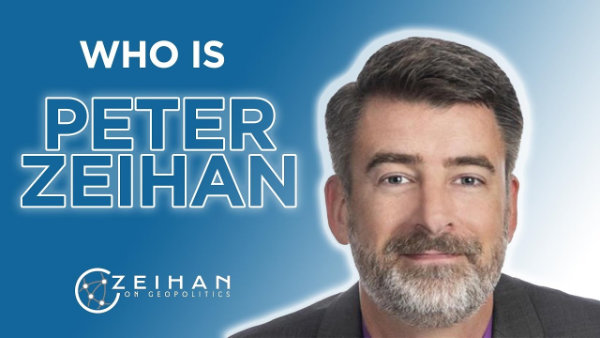
Peter Zeihan
is an expert in geopolitics: the study of how place impacts financial, economic, cultural, political and military developments. He presents customized executive briefings to a wide array of audiences which include, but are not limited to, financial professionals, Fortune 500 firms, energy investors, and a mix of industrial, power, agricultural and consulting associations and corporations. Mr. Zeihan has been featured in, and cited by, numerous newspapers and broadcasts including The Wall Street Journal, Forbes, AP, Bloomberg, CNN, ABC, The New York Times, Fox News and MarketWatch.
The Future Now Show
ASEAN - the Future?
with Shermon Cruz, James M. Dorsey, Mike Jackson & Miss Metaverse
ASEAN, the Association of Southeast Asian Nations, is a political and economic union of 10 member states in Southeast Asia, which promotes intergovernmental cooperation and facilitates economic, political, security, military, educational, and sociocultural integration between its members and countries in the Asia-Pacific. ASEAN's primary objectives are to accelerate economic growth by loosening restrictions on goods, services and capital within the internet market and through that advance cultural, economical and social progress and development.

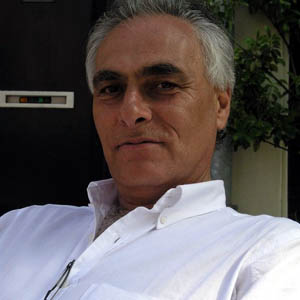

Moderator
Credits
Shermon Cruz
Manila, Philippines
Executive Director and Chief Futurist Center for Engaged Foresight
engagedforesight.wordpress.com
Chair at the Association of Professional Futurists
apf.org
Chair and Board of Directors Asia Pacific Futures Network (APFN)
asiapacificfutures.net
James M. Dorsey
Singapore
Adjunct Senior Fellow S. Rajaratnam School of International Studies
www.rsis.edu.sg
The Turbulent World with James M. Dorsey
www.jamesmdorsey.net
Mike Jackson
Philippines
Founder of Shaping Tomorrow
www.shapingtomorrow.com
Moderator
Katie (Miss Metaverse™) King
Futurist and Content Creator
Thailand & Cary, North Carolina, USA
futuristmm.com
Felix B Bopp
Producer of The Future Now Show
clubofamsterdam.com
The Future Now Show
clubofamsterdam.com/the-future-now-show
You can find The Future Now Show also atLinkedIn: The Future Now Show Group
YouTube: The Future Now Show Channel
Article 02
China ASEAN Relationship
by CGTN TV Asia Today
Ibrahim Kholilul Rohman, Senior Research Associate,
Indonesia Financial Group (IFG) Progress.
News about the Future
> TransPod
> Smart Roads
TransPod is developing the next generation of affordable and sustainable ultra-high-speed transportation for a better connected and fossil fuel-free society.
TransPod is building solutions to solve mankind’s biggest upcoming challenge. The way people move is not sustainable. As the population is demanding faster deliveries and faster transport, it is critical to develop new transportation systems capable of moving people fast and clean.
In a vacuum tube train system, pressurized passenger and cargo vehicles travel in a low-pressure tube environment, driven by linear induction motors and air compressors, at speeds exceeding 1000 km/h. TransPod’s cutting-edge new design enables a significant reduction in the investment capital, increase in reliability, and improved operational performance, allowing a stronger business case for this system.
Cities are facing pressures to address environmental issues caused by traffic congestion and urban population growth while providing more equitable mobility and sustainable transportation. Smart road technology helps city planners and governments address these challenges. The Internet of Things (IoT) is making road transportation more connected, safe, sustainable, and efficient with traffic management, pedestrian and vehicle safety, environmental monitoring, smart and connected roadway corridors, and EV charging and parking networks.
What Is Smart Road Technology?
With new pressures for cities to develop more effective roadways and highways, smart infrastructure is essential for modernization. Smart roads built on IoT and information and communications technology (ICT) can make it possible for cities and transportation authorities to collect and analyze data to improve day-to-day traffic management. Smart road infrastructure can also help cities adapt for long-term sustainable transportation needs. With IoT sensors, cameras, radar, and 5G-equipped technologies, data can be analyzed in near-real time and used to improve congested roadways, streamlining traffic flow. Data can also be sent to the cloud for long-term analysis, providing critical insight for efforts such as reducing CO2 emissions.
Edge computing opens myriad possibilities for smart and connected roads. It enables low latency for the analytics and artificial intelligence (AI) that power smart road infrastructure, like adaptive traffic lights and integrated roadways. For example, traffic lights that automatically adjust their timing based on sensor data can enhance the flow of traffic or change signals to help protect others on the road from dangerous drivers.
Article 03
Philippines, Thailand and Singapore
with Anthony Bourdain
Anthony Bourdain No Reservations: Philippines Part 1
Anthony Bourdain A Cook's Tour: One Night in Bangkok
Anthony Bourdain A Cook's Tour: Singapore New York in Twenty
Recommended Book
Climate Change and Water Resources
by Sangam Shrestha, Mukand S. Babel, Vishnu Prasad Pandey
Covering the various aspects of water and climate change, Climate Change and Water Resources presents the principles of climate change science and its effects on earth's water supply. Utilizing the knowledge and expertise from well-known experts in the field, the text provides a broad outline of the many interrelated aspects of climate variations, climate change, and connections to water resources. Designed to help managers with developing strategies, implementing policies, and investing in infrastructure and information sources for integrated water resources management, the text addresses many issues regarding climate change and water resources. It also includes adaptation options, which are essential to water resource sustainability.
The material is divided into four sections. The first part of the book provides an introduction to climate change and considers theoretical aspects and available tools. The second part of the book examines the impacts that climate change has on the water sector. The third part focuses on the different adaptation measures needed to minimize the effects of climate change. The fourth part presents a number of case studies.
Focused on climate change in the water sector, Climate Change and Water Resources closely analyzes scientific research and fuels study for a greater understanding of climate change and the proper management of water. This text is useful for undergraduate and postgraduate students, scientists, and design engineers as well as those working at research institutes and implementing and planning agencies.
Dr. Sangam Shretha
is an Associate Professor contributing to the Department of Energy, Environment, and Climate, School of Environment, Resources and Development, Asian Institute of Technology, Thailand. He lectures in Energy and Climate Change and Sustainable Development Program
Article 04
The science of water sustainability
by TechKnow, Al Jazeera English
From space, the Earth is a big blue planet covered 70 percent in water. However, a closer look reveals that only two and a half percent of that is fresh water, with only one percent being easily accessible to keep our 6.8 billion inhabitants alive and well.
On TechKnow, we explore the possible solutions to address water scarcity through science, and explore the effect these new initiatives could have in the larger agricultural areas around the world. We also explore technological advancements that are having a quantifiable impact on conserving fresh water through innovation.
Climate Change Success Story
Sustainable Water Future
“Water is the life-blood of our planet: it is vital for human life and public health; grows our food that we eat; nurtures the environment that sustains our planet; and flows through and connects the economies we depend on.” - High Level Panel on Water, 2016, Water Future of Future Earth
Water Efficiency at Home
by National Geographic
This is the future: Sustainable water resources
by Mott MacDonald
Inspiration towards sustainable water management
Auroville and UN SDGs
by Auroras Eye Films
We are in a serious crisis and change is needed to avoid a catastrophe. In 2015, the UN compiled 17 Sustainable Development Goals (SDGs) and 169 targets as a utopian vision of a world where humanity can live sustainably. The SDGs were signed by 193 countries and aimed to be achieved by 2030, with more work to be done!
The SDGs are a tool for governments to develop regulatory and support systems that both globally and locally reinforce the efforts towards sustainability, and upscale good practices to regional and global level.
This modern crisis is of course not the first which humanity has gone through. Throughout history we can see the reoccurrence of such crises, when critical paradigm shifts and regime changes were needed to evolve beyond them. In such times the grass-roots movement of Intentional Communities has often played an intensified role experimenting and finding solutions. Small groups of people who perceive the crisis early separate from the rest of the population and break away from the mainstream into communities. Members in these Intentional Communities worked to bring about the changes needed for human survival & renewal, first within their own community but also as models for all of humanity.
After the 1960s, some of the first to sense the looming environmental crises started formulating new types of Intentional Communities, that focus on creating & redefining sustainability through their activities. One of the most successful and long lasting Intentional Communities was founded in South India in 1968 - Auroville - “The city the Earth needs”
The people living in Auroville seek to combine ancient wisdom with modern technology as a living laboratory, and develop practices that ensure Auroville’s resilience despite the many challenges.
This documentary focuses on one of the most pressing questions of the present crisis, how to achieve SDG6, how to achieve water security for all.
The movie presents 8 universal aspects of today’s global water crisis, and some of the good practices used in Auroville which also contribute to the aims of SDG6. We hope this video can bridge the top-down UN development goals with the grass-roots practices. By sharing & upscaling such practical solutions regionally & beyond we can emerge from this crisis.
Future Earth harnesses the experience and reach of thousands of scientists and innovators from across the globe. This global community is spread over a series of networks and governing and advisory bodies.
Future Earth supports 27 Global Research Networks that together address the complex interactions between natural, social and technological systems, and how those interactions affect, across time and space, the planet’s life support systems, socio economic development, and human wellbeing.
Global Research Networks - Topic Water
The mission of Future Earth Coasts is to support adaptation to global change by linking natural and social sciences with knowledge of coastal communities at global, regional and local scales. Future Earth Coasts operates as an international research project and global expert network exploring the drivers and social-environmental impacts of global environmental change in coastal zones.
Oceans and coasts are changing. We’re listening to those changes. Complex challenges take a diverse community to hear, understand and act.Future Earth Coasts acknowledge and pay our respects to the Traditional Owners and the Elders past, present, and emerging throughout the world’s coastal zones and recognise their continuing connection to land, waters, and culture. They hold the memories, traditions, cultures, and hopes of Indigenous People around the world.
IMBeR — Integrated Marine Biosphere Research
IMBeR – Integrated Marine Biosphere Research – is a large global research project which focuses on ocean sustainability in the context of global change. We want to understand past, present and future changes to the ocean. In particular, we want to know how we can achieve a sustainable ocean for the benefit of society.
IMBeR supports collaborative, disciplinary, interdisciplinary, transdisciplinary and integrated research that addresses key ocean science issues generated by and/or impacting society. Such research is required to provide evidence-based knowledge and guidance, along with options for policy-makers, managers and marine-related communities, to help achieve sustainability of the marine realm under global change.
MAIRS-FE – Monsoon Asia Integrated Research for Sustainability
South, Southeast, and East Asia are regions where the major features of landscape — such as vegetation, soil, and the water system — developed in a monsoon climate. However, the variability of monsoon climates cause a high frequency of climate-related disasters, such as floods, drought, and heat waves which often bring great damage to the region. Meanwhile, Monsoon Asia is developing rapidly with the highest population density in the world.The vision of MAIRS-FE is to significantly advance our understanding of the interactions between the human-environment relationship in the monsoon Asian region and subsequent implications to the global earth system. MAIRS-FE research aims to support the global strategies for sustainable development.
Sustainable Water Future Programme (WATER FUTURE)
The Sustainable Water Future Programme (WATER FUTURE) is a global research platform with expertise and innovation in water research, policy, security, and sustainability. Building upon more than a decade of water-related research under the Global Water System Project, WATER FUTURE provides the knowledge and support to accelerate transformations to a more sustainable planet.
Research to support the transition to water sustainabilityWater is and will remain a crucial factor in the many challenges that our world faces, and is a central goal of the Sustainable Development Agenda.WATER FUTURE is a core activity of Future Earth. Hosted by Griffith University’s Australian Rivers Institute in Brisbane, Australia, its sole mission is to support the quest for solutions to the world’s water problems.
Research conducted through WATER FUTURE seeks to ensure a balance between the needs of humankind and nature through the protection of ecosystems and the services it provides. Furthermore, WATER FUTURE aims to offer real solutions underpinned by interdisciplinary science to deliver a sustainable “water world.”
Water-Energy-Food Nexus Knowledge-Action Network
Delivering water, energy, and food for all in a sustainable and equitable way is one of the major challenges faced by our societies.Future Earth’s Water-Energy-Food Nexus Knowledge-Action Network is a network of people and organizations working to address nexus challenges. We’re fostering transdisciplinary research and communicating the importance of holistic system approaches across water, energy, and food systems.
The Network is unique in that it is not dominated by any one of the three sectors, instead providing a balanced platform for discussion and agenda setting. Together with Future Earth’s Global Research Projects, the Network brings together experts from across disciplines to break down the silo-thinking which inhibits transdisciplinary research and solutions.
The percentage of world population lacking access to electricity, safe drinking water and food. Data from World Bank (2014), WHO and UNICEF (2015) and FAO (2016).
System interactionsInteractions between water, energy and food systems are manifold. These interactions intensify as demand for resources increases. Ongoing growth in global population combined with societal shifts towards ever more resource-intensive lifestyles are putting these systems under increasing pressure. By 2050, according to most of the baseline scenarios, the demand for energy will nearly double while water and food demand is expected to increase by over 50%. Add in major environmental challenges, including climate change, land use change, and the depletion of natural resources, and the urgency for action becomes clear.
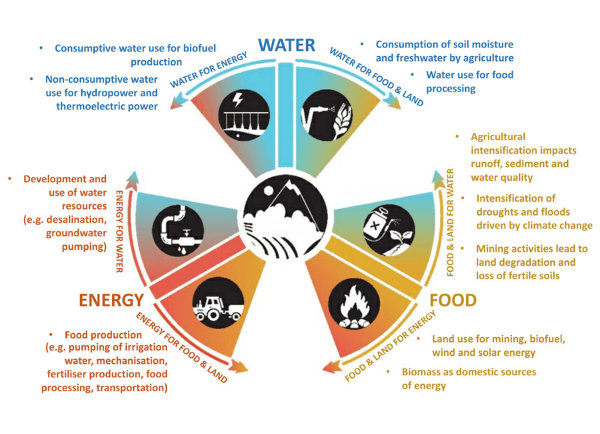
Examples of connections between water, energy and food systems. Adapted from United Nations Economic Commission for Europe 2016.
Futurist Portrait
Sohail Inayatullah
UNESCO Chair of Futures Studies
Professor Sohail Inayatullah, a political scientist, is the UNESCO Chair in Futures Studies at the Sejahtera Centre for Sustainability and Humanity, IIUM, Malaysia. He is also a Professor at Tamkang University, Taipei (Graduate Institute of Futures Studies) and an Associate, Melbourne Business School, The University of Melbourne. From 2016 – 2020 he was the UNESCO Chair in Futures Studies at USIM, Malaysia. From 2001-2020, he was an Adjunct Professor at the University of the Sunshine Coast, Australia. From 2011-2014, he was Adjunct Professor at the Centre for policing, counterterrorism and intelligence, Macquarie University, Sydney. In 1999, he was the UNESCO Chair in European Studies at the University of Trier, Germany.
About Sohail InayatullahIn 2016, Professor Inayatullah was awarded the first UNESCO Chair in Futures Studies. In 2010, he was awarded the Laurel award for all-time best futurist by the Shaping Tomorrow Foresight Network. In March 2011, he was awarded an honorary doctorate by Universiti Sains Malaysia, Penang. He received his doctorate from the University of Hawaii in 1990. Inayatullah has lived in Islamabad, Pakistan; Bloomington, Indiana; Flushing, New York; Geneva, Switzerland; Kuala Lumpur, Malaysia; Honolulu, Hawaii; and Brisbane and Mooloolaba, Australia.
Inayatullah is the Editor-in-Chief of the Journal of Futures Studies and on the editorial boards (or scientific advisor) of Futures, Prout Journal, World Future Review, World Futures, Futuribles, and Foresight. He has written more than 400 journal articles, book chapters, encyclopedia entries and magazine editorials. His articles have been translated into a variety of languages, including Catalan, Spanish, Urdu, Hindi, Bengali, Italian, Japanese, Russian, Indonesian, Farsi, Arabic, and Mandarin. Inayatullah has also written and co-edited twenty-sux books/cdroms, including:CLA 3,0: Thirty Years of Transformative Research (with Ralph Mercer, Ivana Milojevic, and John A. Sweeney); What Works: Case Studies in the Practice of Foresight; CLA 2.0: Transformative Research in Theory and Practice (2015, and Ivana Milojevic); Questioning the Future: Methods and Tools for Organizational and Societal Transformation (2007); Macrohistory and Macrohistorians: Perspectives on Individual, Social, and Civilizational Change (1997 and Johan Galtung). His latest (2018) book include Asia 2038: Ten Disruptions That Change Everything (in English, Mandarin, and Korean and Lu Na), Futures Thinking and Foresight: Why Foresight Matters for Policy Makers (Susann Roth) and Infectious Futures: Reflections, Visions, and Worlds Through and Beyond C0VID-19 (Ramos, Black and Sweeney).
Metafuture is an educational think tank that explores alternative and preferred futures and the worldviews and myths that underlie them. Through presentations, workshops and research, Metafuture helps local and global organizations and institutions create alternative and preferred futures. It is hosted by Sohail Inayatullah and Ivana Milojevic.
The Future Speaks: Decision-Making w/ Transformational Futures - Sohail Inayatullah & Frank Spencer
by TFSX
Copyright © 2002-2023, Felix Bopp. All rights reserved.



